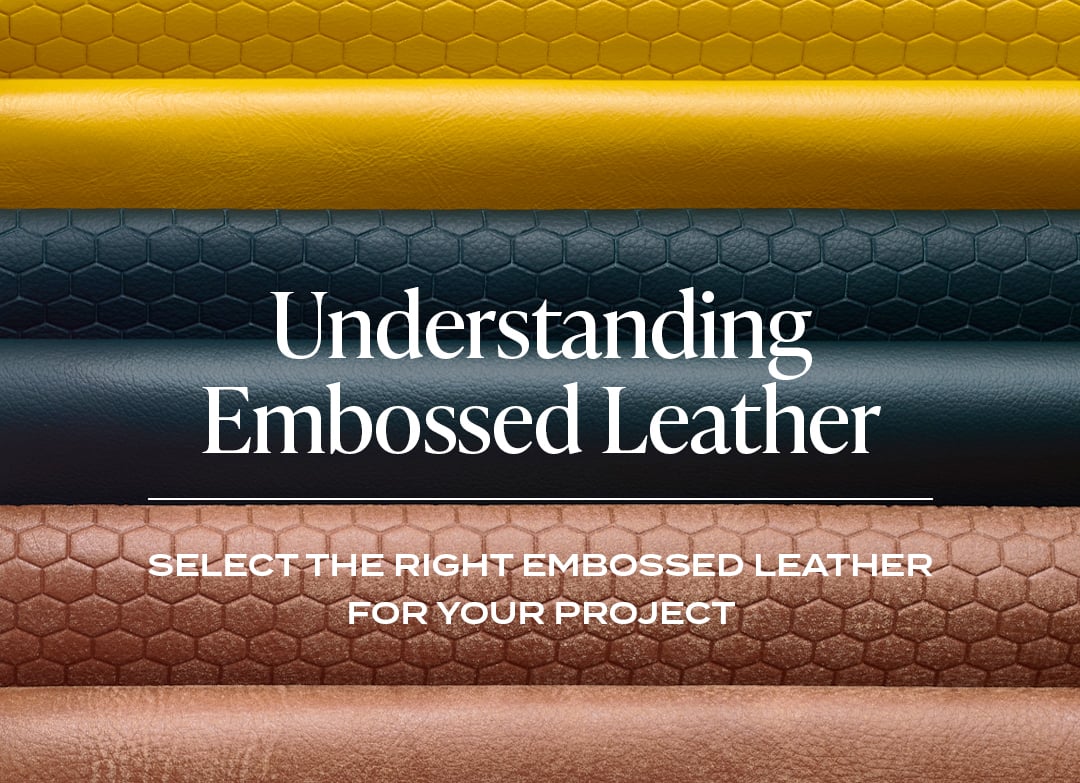How Is Leather Embossed?

When shopping for leather, you may find products that have an embossed pattern or have the option to add an embossed pattern to a smooth leather. Let’s take a closer look at embossed leather, embossing techniques and possible layout options when making your purchase.
What is Embossing?
Embossing is a process of adding texture or pattern to leather. For example, you might prefer a woven texture, an animal pattern such as alligator, or a geometric pattern like diamonds. These patterns are pressed onto the surface of the hide by using a combination of heat and pressure. Depending on the design, different methods are used to emboss leather.
Embossing Tools and Techniques
|
Small Plate Embossing A popular embossing method uses smaller sized steel plates that are generally between 40-54 inches wide and 24 inches high. The plate sizes vary depending on the pattern design. The leather is placed between an engraved plate and a counter plate on an embossing machine. The machine presses the two plates together and applies heat and pressure to press the pattern onto the surface of the hide. This process is repeated until the pattern covers the surface of the hide. Subtle plate marks or slight overlapping in the pattern can sometimes appear due to the nature of plate embossing. This method is typically done on half hides due to size limitations of both the plates and machine. |
 |
Large Plate Embossing
Large plate embossing is a similar process, which entails larger plates on a machine that can accommodate full hides. Large embossing plates, typically 56 inches by 36 inches, are engineered to efficiently add uniform textures on larger surface areas. The appearance of plate marks and overlapping areas is less evident and often not seen at all. Full hide embossing is available only with select patterns and specific leather options.

 |
Roller Embossing Roller embossing uses large cylinders with patterns on the surface to allow for continuous embossing. Leather moves under a heavy roller as the pattern is pressed onto the surface of the hide with heat and pressure. Due to machine size limitations, the sides of the hides are typically trimmed. This method yields larger cutting areas with no disruption to the pattern. |
Small Plate Layout Options
When purchasing embossed leather, it is important to note the direction of the pattern on the hide and the embossing method used. For patterns that are small plate embossed, you might be offered options to ensure the orientation of the pattern is suitable for your needs.
Option 1: The standard layout has the plate positioned horizontally and leather is pressed multiple times along the length of the half hide. This is how small plate embossing is done when no special requests are made.
Option 2: You may request to change the pattern direction. For this option, the plate is rotated vertically. While this provides design flexibility, it typically results in lower cutting yield.
to scale.
Option 3: You may request center cut pieces instead of half hides if you need higher cutting yields. For this option, the sides of the hides are trimmed prior to embossing. The plate is positioned horizontally along the center cut piece. The scraps are not embossed, unless requested, and will be sent with your order.

Have additional questions? We’re happy to help. Contact your local Garrett Leather Account Executive today.
Have a leather topic you would like us to address as part of our “Ask The Experts” series?
Send your questions to [email protected].








